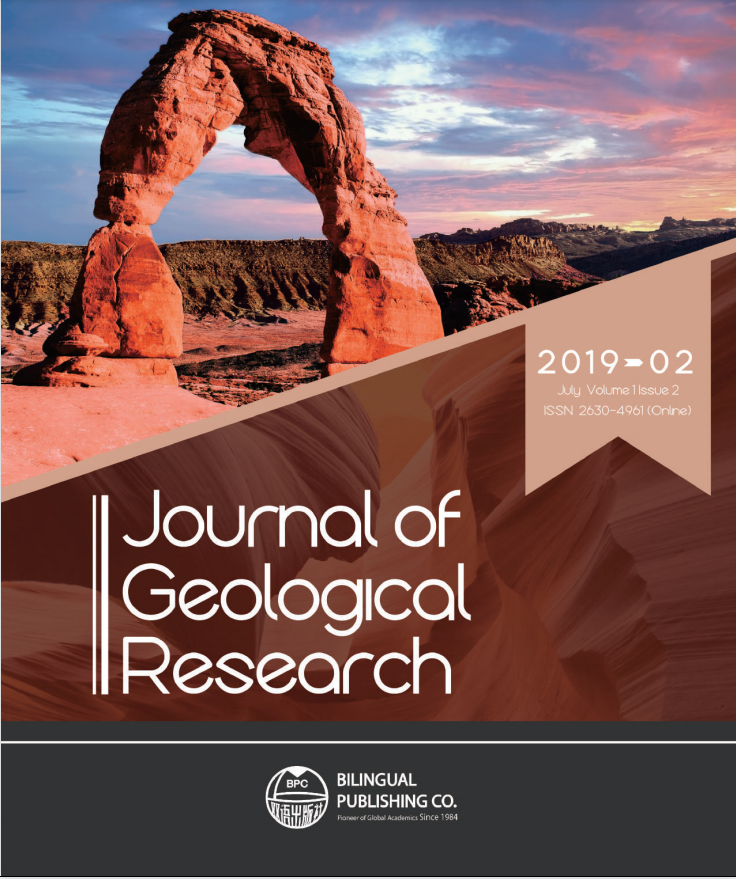Living Matter and the Laws of Thermodynamics for the Biosphere
DOI:
https://doi.org/10.30564/jgr.v1i2.1007Abstract
The laws of thermodynamics have been developed for inert matter, and living matter has not been considered as a variable in these laws. Living matter possesses properties that have had major effects on biosphere evolution with time. The zeroth property is “Living matter is produced from living matter only.” The first property may be summarized as ”Living matter occupies the available spaces to the maximum extent when environmental conditions are favorable and no obstacles are present.” And the second property is “ Living matter mutates, changes, and adapts to maintain the continuity of life and size as large as possible when environmental conditions are unfavorable.” While the zeroth property is objective in nature, the first and second properties are subjective, in that they are driven by internal stimuli characterizing living matter. Their interaction with the laws of thermodynamics may be thought of as “philosophy intertwining with science.” Accordingly, the laws of thermodynamics are revised to factor in life as a variable. Mathematical expressions of the first and second laws are derived and some of their applicability to the biosphere and climate is explained and discussed. The main conclusion is that life changes climates and the fabric of the biosphere.
Keywords:
Laws of Thermodynamics; Biosphere; Photosynthesis; Past climates; Surface geologyReferences
[1] Vernadsky V. I. The Biosphere. English version by Copernicus, Springer-Verlag: New York, U.S.A, 1926, 1998: 192.
[2] Perry R. H. and Green D. Perry’s Chemical Engineers Handbook, 6th ed., Mc Graw-Hill, New York, U.S.A.. Ed. Crawford H. B. and Eckes B. E., Chapter 4, Thermodynamics, by Lin K. H., Van Ness H. C. and Abbott M. M., , 1984: 4-52+4-82.
[3] Anestis M. AP Biology, McGraw-Hill, New York, 2010: 359, Chapter 8, Photosynthesis: 73-84.
[4] Cain M. L., Bowman W. D. and Hacker S. D. Ecology, 3rd ed., Sinauer Associates, Inc., Sunderland, Massachusetts, U.S.A., 2014: 596. Chapter 4: 98-123; Chapter 10: 236-239.
[5] Swedan N. On the carbon cycle and its interactions with the biosphere, Russian Journal of Earth Sciences, 2019, 19, ES2007. DOI:https://doi.org/10.2205/2018ES000643
[6] Van der Hammen T. The Pleistocene Changes of Vegetation and Climate in Tropical South America, Journal of Biogeography, 1974, 1(1): 3-26. DOI: https://doi.org/10.2307/3038066
[7] Black L. T. Russians in Alaska, University of Alaska Press, Fairbanks, Alaska, 2004: 328.
[8] Swedan N. H. Ridge Push Engine of Plate tectonics, Geotectonics, 2015, 49(4): 342-345. DOI: https://doi.org/10.1134/S0016852115040081
[9] Swedan N. H. Association of Variations in the Dynamics of the Lithosphere with Sea Temperature, Journal of Geological Research, 2018, 1(1): 8-16. DOI: https://doi.org/10.30564/jgr.v1i1.458
[10] Seton M., Gaina C., Müller R. D. and Heine C. Mid-Cretaceous seafloor spreading pulse: Fact or fiction? Geology, 2009,37(8): 687–690. DOI: https://doi.org/10.1130/G25624A.1
[11] Graham A. The Andes: A Geological Overview from a Biological Perspective, Annals of the Missouri Botanical Garden, 2009, 6,(3): 371-385. https://www.jstor.org/stable/40389940
[12] Berry E. W. The Age of the Bolivian Andes, Proc Natl AcadSci U S A, 1917,3(4): 283–285. DOI: https://doi.org/10.1073/pnas.3.4.283
Downloads
How to Cite
Issue
Article Type
License
Copyright © 2019 Nabil H. Swedan

This is an open access article under the Creative Commons Attribution-NonCommercial 4.0 International (CC BY-NC 4.0) License.
Copyright and Licensing
The authors shall retain the copyright of their work but allow the Publisher to publish, copy, distribute, and convey the work.
Journal of Geological Research publishes accepted manuscripts under Creative Commons Attribution-NonCommercial 4.0 International License (CC BY-NC 4.0). Authors who submit their papers for publication by Journal of Geological Research agree to have the CC BY-NC 4.0 license applied to their work, and that anyone is allowed to reuse the article or part of it free of charge for non-commercial use. As long as you follow the license terms and original source is properly cited, anyone may copy, redistribute the material in any medium or format, remix, transform, and build upon the material.
License Policy for Reuse of Third-Party Materials
If a manuscript submitted to the journal contains the materials which are held in copyright by a third-party, authors are responsible for obtaining permissions from the copyright holder to reuse or republish any previously published figures, illustrations, charts, tables, photographs, and text excerpts, etc. When submitting a manuscript, official written proof of permission must be provided and clearly stated in the cover letter.
The editorial office of the journal has the right to reject/retract articles that reuse third-party materials without permission.
Journal Policies on Data Sharing
We encourage authors to share articles published in our journal to other data platforms, but only if it is noted that it has been published in this journal.




 Nabil H. Swedan
Nabil H. Swedan

